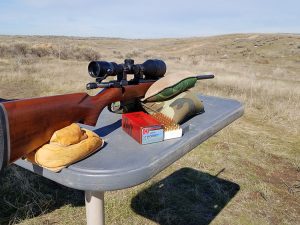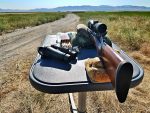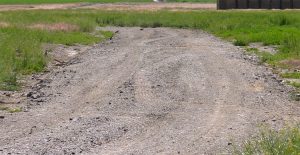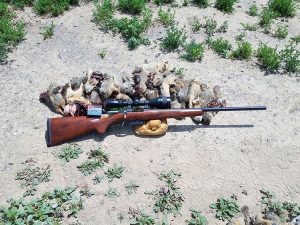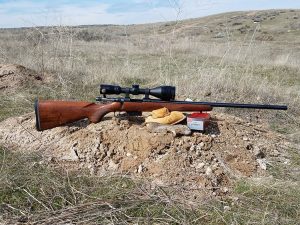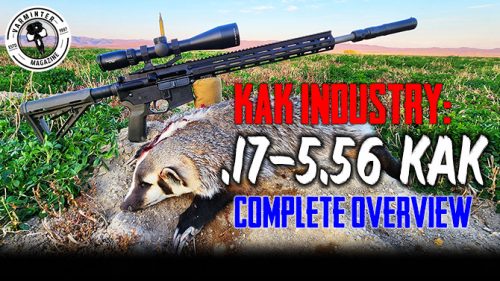Last year Hornady announced another addition to their growing 17 Hornet line of ammunition. Hornady shipped us a couple of boxes of the new 25 grain hollow-point load last year, but we were unable to get out into the field due to my move to Idaho, coupled with the rough winter that followed my arrival. Because of this, the boxes of ammo were tucked away until this past spring, where we were able to shoot it and then take it out into the field for some ground squirrel hunting.
Range Report:
Even though this article/video is listed as an “ammo review” with hunt report, we will be concentrating more on the hunt report, because Hornady has, once-again, hit the mark with this new load. We found that the new 25 grain offering was accurate, consistent and speeds were on-par with what Hornady lists in their specifications.
Hornady Custom .17 Hornet – 25 Grain HP Specifications (#83006):
- 25 grain HP Varmint bullet
- 3375 fps (muzzle – 24″ barrel) (our average was 3383 fps out of a CZ Model 527 with a 24″ barrel)
- 632 fpe (Foot Pounds of Energy)
- .187 ballistic coefficient
- The price of these rounds run in the $26.00 to $30.00 per box of #50 (low-end of price spectrum).
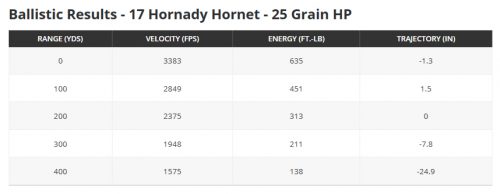
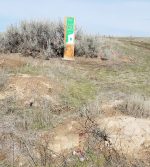 Our accuracy results ranged from 0.528″ to 0.85″, with an average of 0.678″ over ten, 5-shot groups at 100 yards. After shooting the groups, we settled on a 200 yard zero, which put the rifle at 1.1″ high @ 100 yards and -5.3″ low @300 yards. While shooting the groups, a ground squirrel popped up 2 yards in front of the target. We are not known for passing up gimme shots, so this was a great chance to see what the bullet would do to a smaller ground squirrel at 98 yards. The bullet smacked it hard, rolling it off the mound, dead.
Our accuracy results ranged from 0.528″ to 0.85″, with an average of 0.678″ over ten, 5-shot groups at 100 yards. After shooting the groups, we settled on a 200 yard zero, which put the rifle at 1.1″ high @ 100 yards and -5.3″ low @300 yards. While shooting the groups, a ground squirrel popped up 2 yards in front of the target. We are not known for passing up gimme shots, so this was a great chance to see what the bullet would do to a smaller ground squirrel at 98 yards. The bullet smacked it hard, rolling it off the mound, dead.
Hunt Report – Northern Nevada – Belding’s Ground Squirrels:
It was a few months after the initial range work when I was able to really put this ammo to work on some varmints. The grass here in Southern Idaho had grown quite tall, so we decided to head over to a spot on a private ranch down in Northern Nevada. We were promised some good shooting, but until we actually sit down at the bench and start pulling the trigger, we try not to get our hopes up. Needless to say, we were not disappointed in the amount of varmints and shooting we experienced!
The set-up was simple. I broke from the rest of the Varminter crew (they were itching to shoot as well) and set-up with my bench pointed down a private dirt road on the edge of a large alfalfa field. I was going to be shooting something I call “The Gauntlet” (see the old Clint Eastwood movie). What this means, is that the majority of the ground squirrels were making their home outside of the alfalfa fields, in an area that was basically fallow, with weeds growing everywhere. This is a perfect spot for ground squirrels, because they are forced to cross an open area (the dirt road), in order to get to the lush, green, alfalfa. Within this gauntlet, the ground squirrels would consistently stop on the edge to make sure it was safe to run across to the alfalfa side. This gives you a few second window to find the squirrel in your scope and make the shot. It forces you to pick a spot and to only pull the trigger when you have a kill shot available. The range of shoots were from 80 yards out to 220 yards down the road at a curve. With the 17 Hornet, I tried to stay out at the far edge of this distance, but there were many times when a squirrel popped out closer, where I took the shot.
The video camera was set-up behind me, where I left it running while the ground squirrels ran back-and-forth. I was shooting off my Caldwell Stable-Table bench and was using my standard bag set-up as well (Uncle Mike’s front bag and Protektor rear bag). As stated above, my focus was on the “gauntlet” area directly in front of me, but I also took many shots out in the alfalfa out of the camera’s field of view. The temps were in the mid-70s, rising up to the mid-80s by the time we picked up the dead ones for pictures. The wind was calm, to light, while shooting the 17 Hornet. In other words, the shooting conditions were almost perfect, considering the time of year (late June), temperatures and wind.
After loading the CZ 527 magazine, I popped it into the rifle and chambered a round. As I was setting up the camera and loading the magazine, there were ground squirrels running everywhere in front of me. I went ahead and ranged the area I was shooting, making mental notes of bushes, or rocks and their distance. It is hard to describe the odd phenomenon of how the terrain in front of you looks through a set of binoculars, or through a scope (even a video camera), compared to how it looks when you are walking through it. The complete lack of depth of field, especially on flat ground, makes things seem so close to each other. Ground squirrels at 80 yards, seem like they are only 50-60 yards away from ground squirrels that are 200 yards away. This is why I always range first, range while shooting and pay attention to the size of the ground squirrels through my optics, so the optical illusion of distance doesn’t cause me to miss.
As soon as I put my binoculars up to my eyes, I found more than a few different potential shots. Instead of blasting away on all the alert ground squirrels that were checking out this new entity in their midst, I waited a few minutes to let things settle down and allow the ground squirrels to get back into their routine of running back and forth. After the short wait, I settled behind the rifle and began choosing my targets. The first shot was a ground squirrel out at the 200 yard mark. It was sitting on the edge of the road, right at the curve, looking to the left. I knew that with the 200 yard zero, I could hold right on it and take the shot. At the crack, I saw dust puff up right behind it. Unfortunately, my shot had hit the back of the squirrel, rendering its back legs useless while it dragged itself across the road. It was a definite kill shot, but my poor placement would cause it to die in minutes as opposed to immediately, which is what I aim for. The next shot was at the 150 yard mark, so I took my time and placed the crosshairs on the head of the ground squirrel. I took the shot and heard the familiar “crack” of a ground squirrel’s head getting hit by a high-speed projectile! That started, what was to turn out, a string of shots where my kill percentage never dropped below 80%! Including a run of 14 kills in a row without a miss, using the 25 grain HP ammo. I ended up with a pile of ground squirrels (the ones I collected).
As you will see in the video, I had all types of opportunities, at all different distances. Most of the shots I made were head-shots, but on a few of the shots I purposely went for the “launch” shots (shooting low on the squirrel, causing the bullet energy to launch the dead varmint a few feet). The 25 grain hollow-point did a VERY good job in making those shots clean kills as well.
**Note: The Ballistics Chart in the Video is Incorrect – See Chart Above for Correct Info**
It seemed like the more ground squirrels I shot, the more would come out. Many of them were cannibals, coming out to eat their dead brethren. Those ground squirrels immediately shot to the top of my kill list when they started acting zombie-like and eating up the brains and organs of the ones shot just moments before their arrival. I would literally pull off a gimme-shot to go after the ones who crossed the line into the dark world of cannibalism. Many of you don’t know that they eat each other, but those of us here in the West who have hunted these a lot, have run into this almost every hunt outing we have. An Idaho Biologist explained that they do this because the attractant of the salt within the dead ones. He described the dead ground squirrels as “salt bags” and with the lack of salt available in the environment the ground squirrels live in, the other ones eat them to satisfy their cravings.
These “zombie” squirrels weren’t a match for the 17 Hornet and the Hornady 25 grain HP load. These rounds proved to be extremely destructive on these ground squirrels and their heavier weight (1.5lbs to 2+lbs) created an audible “whomp” and very dead ground squirrels. The video shows many of the kills and gives you a first hand look at the performance I have discussed above.
Final Thoughts and Upcoming Predator Hunting in the Fall/Winter:
I’m very pleased with this new 17 Hornet load from Hornady. It is accurate out of my CZ M527 and the bullet performs very well on small varmints. This loaded ammo is great for small varmints, as well as for coyotes (and other predators) using the .17 Hornet. The 25 grain load now allows .17 Hornet owners to use bullet weights from the entire spectrum of available factory Hornady ammunition. This includes the 15.5 grain NTX, the 20 grain VMax and now this 25 grain HP in the Custom line of ammunition.
I always try to impress on predator hunters to practice during the spring by shooting varmints with the same ammo they use for predators. This is now a viable option for folks who do not reload, but want a heavier bullet for predator hunting. One thing I did not disclose at the beginning of this article was that I have previously shot the 25 grain bullet in a .17 Remington. In fact, I have been loading and using this particular bullet for a couple of decades, using it to kill a LOT of predators and other varmints. Granted, the .17 Remington load I use pushes the 25 grain bullet at 3850fps, but the speed generated by the .17 Hornet still creates enough energy to drop coyotes on the spot (with good shot placement) and other predators. We’ll put that statement to the test this winter and we will publish our results, but I have absolutely no doubt that it will perform well.
- Podcast with Soul Seekers Nation From the 2025 SHOT Show - February 17, 2025
- Complete Overview of the .17-5.56 KAK Cartridge by KAK Industry - July 21, 2024
- AGM Global Announces New and Upgraded Optics at the 2024 SHOT Show - February 1, 2024

